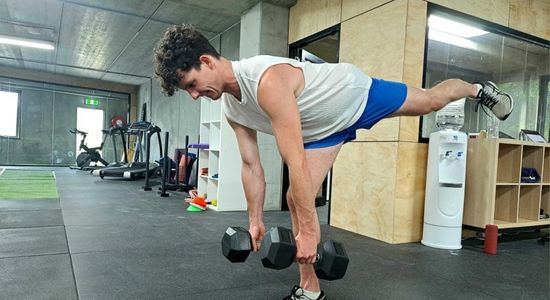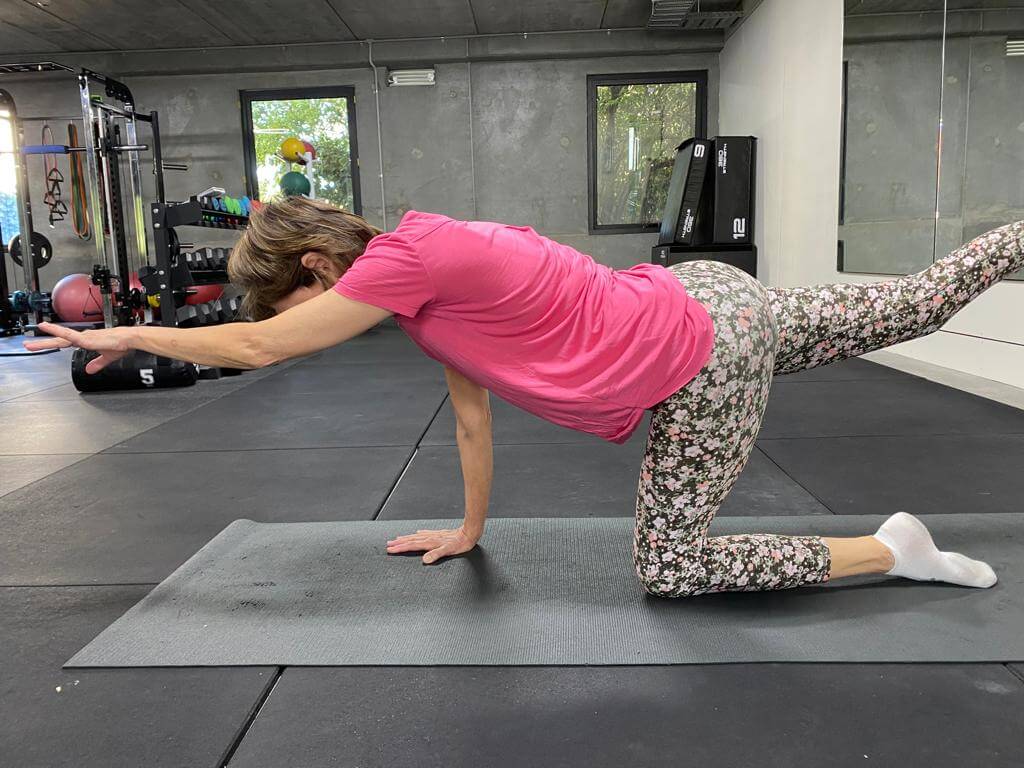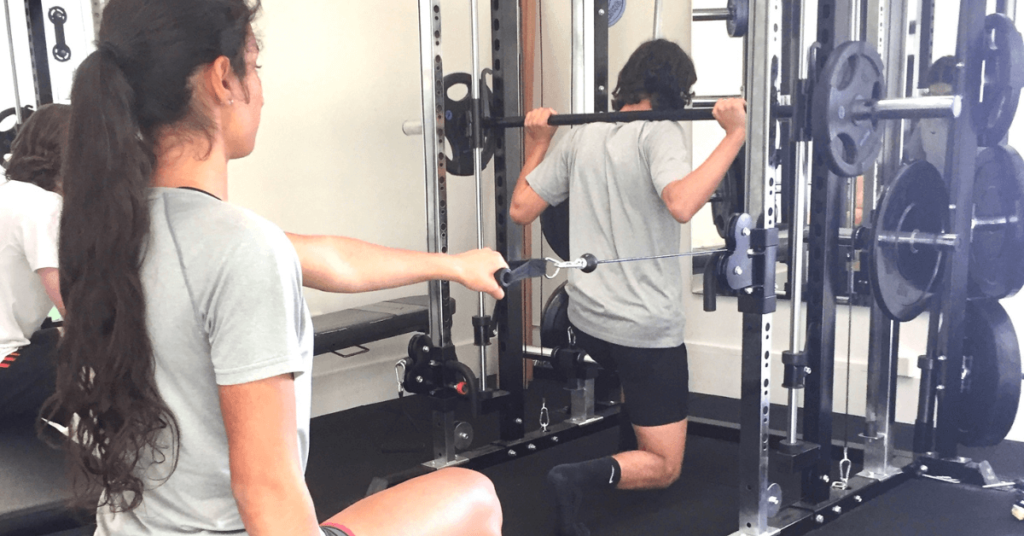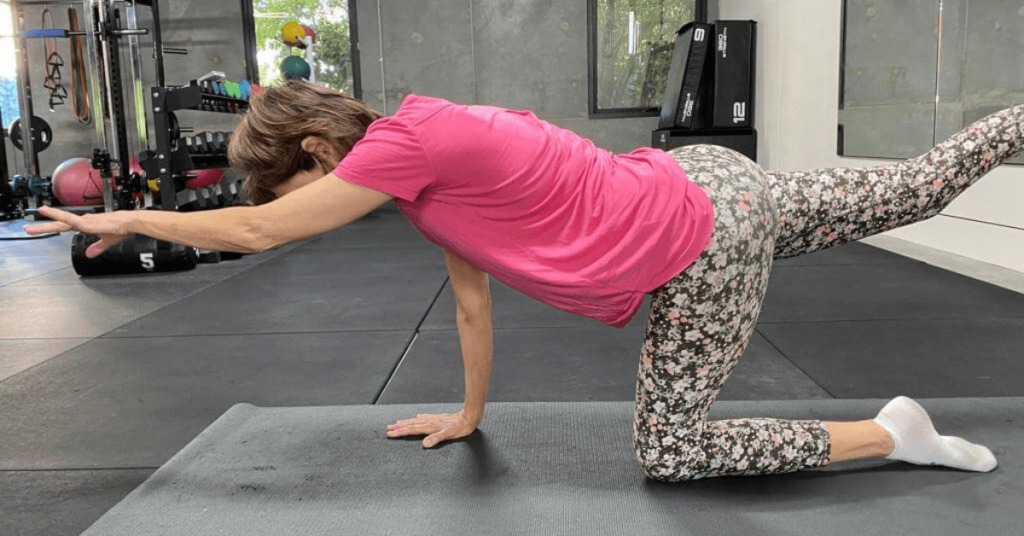Where to Start with Strength Training

When it comes to strength training, it’s difficult to know where to begin. There are a variety of workouts that may be done to work different muscles. There are safety considerations to be made, as well as a vast range of often confusing equipment to master.
It doesn’t have to be as challenging as it seems. We’re here to get you started on the fundamentals of strength training—and to help you design a workout plan that’s tailored to your specific goals. We’ve put up the ultimate strength training for beginners guide, including the advantages of performing it and how to make it work whether in the gym or at home, to help you understand what strength training is and how to do it effectively.
What is strength training?
Strength training is a technique for increasing muscular growth and strength throughout the body by using opposing forces. It is a sort of training that helps you improve your physical strength and bulk and may be used with a variety of exercises. Strength training is designed to give the body a stimulus that forces an adaptive response.
Why do strength training?
It’s not only about being stronger and better. Your bones will become stronger as well. It can also aid in the development of balance and coordination, lowering the risk of falling and hurting oneself. More muscle means you burn more calories even when you aren’t exercising, which may help you lose weight. As you age and lose muscular mass, these advantages will become more relevant.
Do you need to talk to a certified personal trainer?
It’s critical that you follow your strength-training regimens exactly. It allows you to get the most out of your hard work while avoiding harm. If you go to the gym, have the trainers keep an eye on you and provide you with exercise routines for functional strength training. If you want to exercise at home, employ a professional personal trainer who can assess your technique and maybe assist you in developing a workout regimen.
How often should you train?
Muscles require rest and development time. Working each muscle group twice a week is a decent rule of thumb. You may perform a full-body workout twice or three times each week, or alternate upper and lower body exercises every day. Just keep in mind that your muscles will require a full day of rest before the next session. It’s also a good idea to work out all of your major muscle groups at the same time. You may harm yourself if one of them is substantially more developed than the other.
What is the best way to begin strength training as a beginner?
Here it is: the ultimate strength training workout guide for beginners. We’ll walk you through the whole process, from finding the courage to step into the weight room to learning all you’ll need to know.
5 Strength Training Tips for Beginners
1. Make sure you’re in the right state of mind before you begin.
Take a deep breath and step confidently into the gym or weight room. Remember that most people are either timid, like you, or focused with their own workout and aren’t paying attention to what you’re doing. Make an attempt to fit into the latter category. If you’re performing strength training at home, be sure you’re setting yourself up for success. Make a date on your calendar, put on some music, and make sure you have enough space to curl, press, and push your way with strength training.
2. Keep it simple
Don’t overcomplicate a beginners strength training workout by using every piece of gym equipment or doing all types of exercises. If you want to get the most value for money, stick to conventional compound activities that target many muscle groups. These exercises should form the basis of your workouts, and they must be done correctly and with good form. Hire a personal trainer for a single session or consultation to go through what you should focus on if you’re confused about how to organise a workout.
3. Maintain a training log
One of our best recommendations is to keep a training diary, which you can do on your phone or with a fitness app. For each exercise, keep account of how many reps, sets, and weight you used. You might also provide a comment on how it made you feel. Check at what you did the prior time and see if you can go slow down the speed, or do more reps.
4. Maintain a steady pace
Strength training is not a guessing game; it requires consistency and organisation. Within a few weeks, you’ll notice how far you’ve progressed.

Getting Started: The First Steps
A rep is defined as a single repetition of an exercise, whereas a set is defined as the number of repetitions completed in a certain order. Create a workout plan based on the principles below:
- Start with a simple, quick-to-understand programme. On two non-consecutive days each week, do an exercise that works all of your muscle groups. This will allow you to lay a solid foundation and make steady improvement week after week.
- First, warm up to lessen the risk of injury, so for each exercise in your programme, complete five to ten (5-10) minutes of aerobic or warm-up sets with a light and easy-to-lift weight.
- Concentrate on the framework. Maintaining perfect form will help you get the most out of your strength training practise while avoiding injury. Maintain appropriate form by standing tall with your chest up and abs taut, moving slowly so you’re lifting with muscles, and remembering to breathe. Many individuals hold their breath when doing out, yet exhaling at the most difficult part might help drive the movement.
- Allow for at least one day of relaxation. Working the same muscle groups on consecutive days is ineffective in terms of preserving lean muscle tissue and avoiding injury. It’s ok if some people rotate their strength training days, focusing on their lower body one day and their upper body the next.
- Switch things up a little. You may increase the difficulty of your programme after six weeks of constant strength training with the help of a professional strength coach, to detect increases in your body. To maintain your body in the same spot, lift the same weights for the same workouts every week. You may alter the number of repetitions and exercises you do, as well as the order in which they are completed.
Working Out for the First Time
The first exercise is to examine your present physical state and how different activities feel to you.
The goal is to focus on doing the moves correctly rather than putting a lot of weight or reps on the bar.
1. Start with a 5-minute simple aerobic workout to warm up.
2. After a short pause, perform one set of each exercise after another. This includes a list of muscle groups and sample routines. Each muscle group will only require one or two upper-body exercises and three to four lower-body motions.
- Bench press, chest press, and chest push-ups are all chest exercises.
- Shoulder workouts include overhead press, lateral rise, and front raise.
- Bicep exercises include concentration and hammer curls.
- Triceps exercises include kickbacks and triceps extension dips..
- One-arm rows, back extensions, and lat pulldowns are all back workouts.
- Abdominal workouts include wood chops, crunches,and pelvic tilts.
- Lower-body workouts include calf-raises, deadlifts, leg presses, lunges, and squats.
3. Any workout that causes discomfort or pain should be adjusted or avoided.
4. Keep a journal of how the motions feel and the weight you’ve chosen to measure your progress.
5. Rest for at least a day before continuing the programme 2 to 3 times each week, progressively increasing the number of sets of each exercise.
Workout using only your bodyweight for strength training
Before moving on to the next strength training exercise, complete three to five sets of each exercise for a total of up to 12 repetitions. Take a short pause (1–3 minutes) between each set before going on, and perform the workout two or three times a week on different days.
Bench step-ups
Step up onto a low bench with your right foot first, then your left, and then step down. With each set, switch your starting side.
Burpees
Squat down, lay your hands on the ground, then hop your feet back into a plank posture from a standing position. Push-ups are performed by lowering the body to the floor. Return to plank position. Re-enter the room with your feet and stand up.
Calf raises
Stand on your tiptoes and elevate your legs, then lower.
Hip bridges
Your arms should be at your sides while you lie on your back with your knees bent and feet flat on the ground, and knees bent. Lift your hips softly off the ground while firmly pushing your feet down; hold for a few counts before lowering.
Planks
Lift your chest off the ground while lying on your stomach on the ground. While flexing your toes on the floor and lifting your torso up, balance on your forearms and toes. Maintain a solid whole-body alignment with the shoulders and heels. Hold.
Push-ups
Perform by lying down on your back, bending your elbows, and lowering your chest to the ground, then pushing yourself back up.
Lie
Lie on one side with your forearm lifted and your feet and hips stacked for side leg lifts. Ensure that your shoulder and elbow are in perfect alignment. Lift your upper leg straight up with your toes flexed and your foot parallel to the ground, then come to a complete stop at the top.
Side planks
Lie down on one side and support yourself with your forearm. Stack your hips and feet. Raise your hips off the ground then hold. Rep the process on the other side.
Squat leaps
Perform by standing with your feet hip-width apart, bending your knees and squatting your buttocks back and forth, then leaping straight into the air and landing in a squat with your knees bent.
Straight-arm row planks
Start by squatting down with your feet slightly wider than hip width in a push-up position. Hold it while bending and straightening your right elbow to the side. Lower your hand and repeat the process on the other side.
Supermans
Lie down face down with your arms and legs outstretched. Slowly raise your arms and legs as high as you can while keeping your neck relaxed and your eyes downward. After holding, lower.
Why should you do it: This is a fantastic lower-back workout that is essential for preventing lower-back issues. Consider planting your toes into the floor and not letting them come off the ground at any point while lying on your stomach. This will also assist you in engaging more glutes. You don’t have to elevate your chest very high off the floor when doing this. Simply squeeze your bottom while you raise, and you’ll engage the lower-back muscles as well.

Conclusion
Strengthening exercises can help you gain strength over time if you include them into your workout programme. You’ll be able to lift weights more effortlessly and for longer periods of time as your muscle mass grows. Even if you’re not in great shape when you start, if you keep it up, you may continue to build strength.




